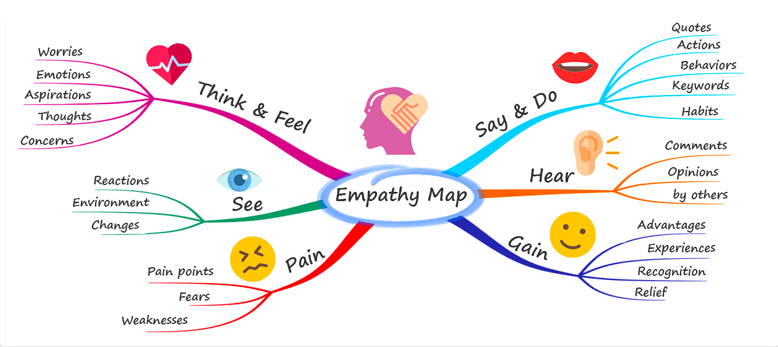CXBOS Insights
Your daily dose of news, insights, and information.
Mind Maps: Your Brain's Best Friend in a Digital World
Unlock your mind's potential! Discover how mind maps can boost creativity and organization in our digital age. Dive in now!
How Mind Maps Enhance Productivity in a Digital Age
In today's fast-paced digital age, where distractions abound and information overload is commonplace, mind maps have emerged as a powerful tool to boost productivity. These visual representations of ideas and concepts allow individuals to organize information in a non-linear way, making it easier to see connections and key relationships. Instead of sifting through endless lists or linear notes, users can create a mind map that not only captures their thoughts but also enhances retention. By utilizing colors, images, and branches, mind maps stimulate both the left and right hemispheres of the brain, encouraging creative problem-solving and efficient brainstorming sessions.
Integrating mind maps into your daily routine can dramatically improve your efficiency. For instance, when planning a project, a mind map can serve as an interactive outline that breaks down tasks into manageable segments. This approach not only clarifies priorities but also helps track progress visually. Furthermore, the digital tools available today often come equipped with features like collaboration options and cloud storage, allowing teams to co-create mind maps in real time. As a result, mind maps not only enhance individual productivity but also foster teamwork and collective brainstorming in the digital landscape.

The Science Behind Mind Mapping: Why Your Brain Loves It
Mind mapping is a powerful technique that resonates with the innate structure of our brains. This method relies on visual representation to organize information, making it easier to process and retain. According to cognitive science, our brains naturally favor graphic over linear information. This affinity stems from the brain's architecture: it processes visuals faster and more efficiently than text. Consequently, by employing mind mapping, individuals can engage multiple areas of the brain, enhancing creativity and facilitating deeper understanding. The freedom of creating a mind map allows for an unrestricted flow of ideas, which helps in grasping complex concepts.
Moreover, the act of creating a mind map triggers various cognitive functions, including association and memory recall. As you branch out ideas from a central concept, you are not just organizing information but also building connections between different thoughts. This network of associations can lead to better problem-solving skills and increased productivity. Additionally, using colors, images, and keywords amplifies your brain's ability to recall information. A well-structured mind map not only reflects how we naturally think but also taps into our brain's preference for visual and associative learning, making it an invaluable tool for students and professionals alike.
10 Creative Ways to Use Mind Maps for Effective Learning
Mind maps are a powerful tool for enhancing effective learning, allowing learners to visually organize information and ideas. One creative way to utilize mind maps is to create a visual syllabus for a course. This entails mapping out the main topics and subtopics, helping students to quickly grasp the structure of the material. Additionally, mind maps can be employed for brainstorming sessions, enabling students to generate and connect ideas spontaneously, which can enhance their creativity and critical thinking skills.
Another innovative approach is to use mind maps for revision sessions. By summarizing each topic or chapter into a concise mind map, learners can quickly review essential points before exams. Mind maps can also serve as a collaborative tool; students can work together to create a class mind map, fostering teamwork and making learning more interactive. Finally, consider integrating multimedia elements, such as images and colors, into your mind maps. This not only makes the learning process more engaging but also helps in retaining information more effectively.